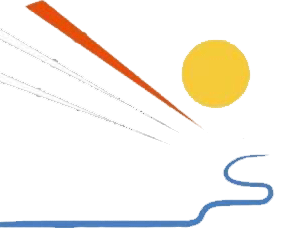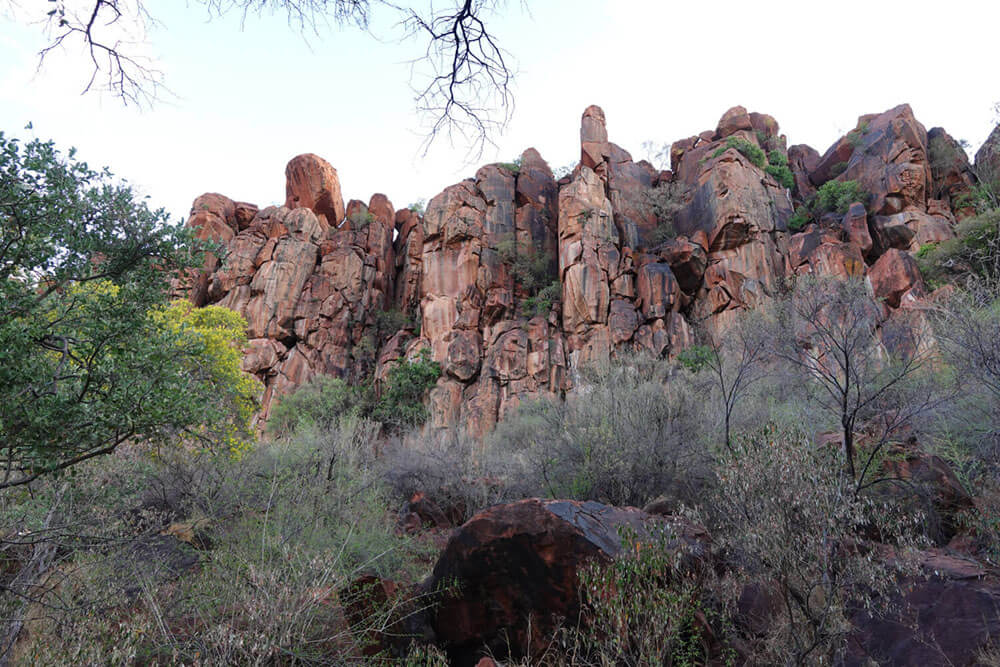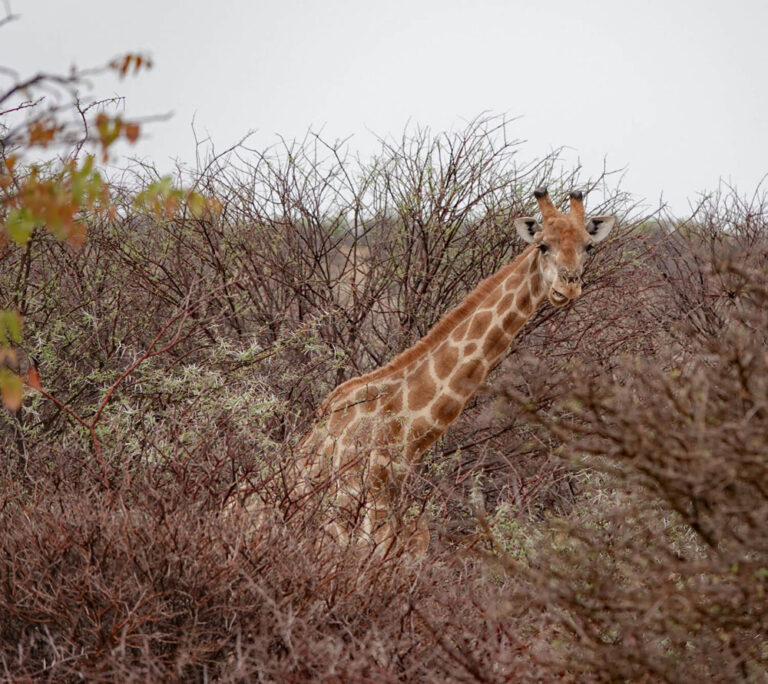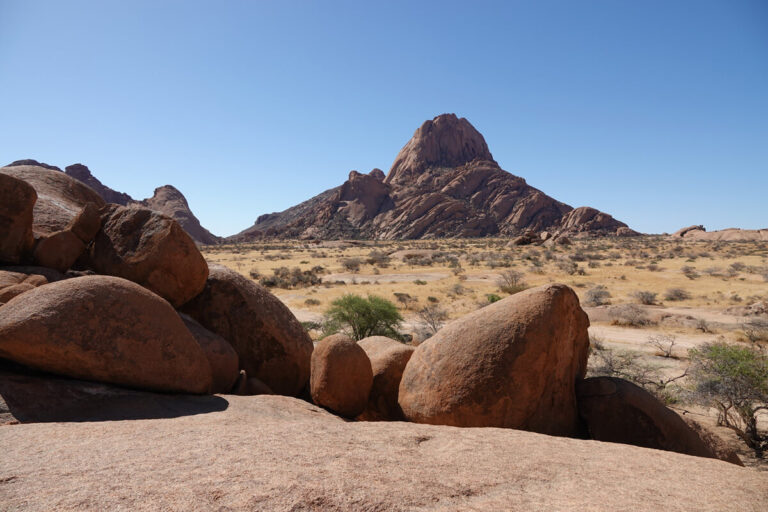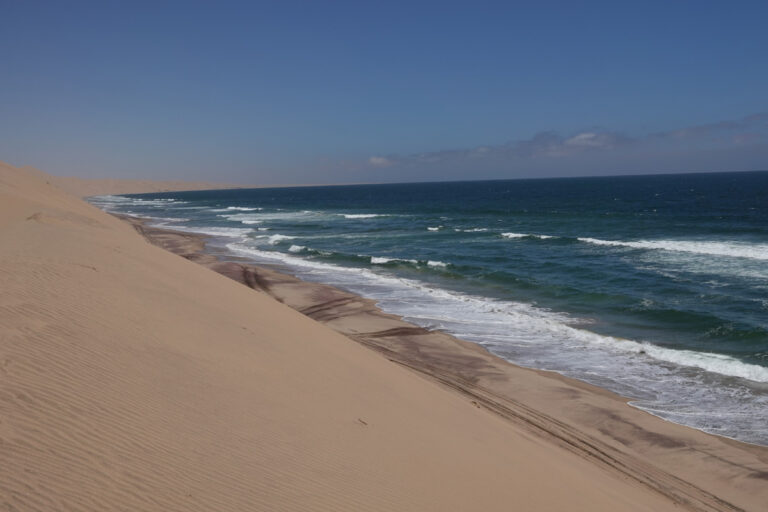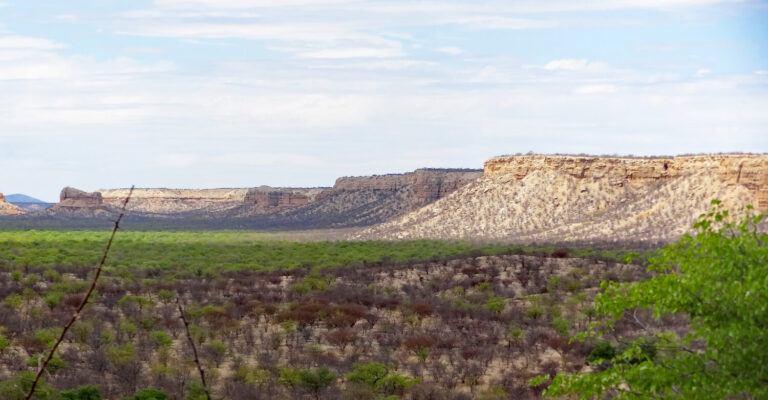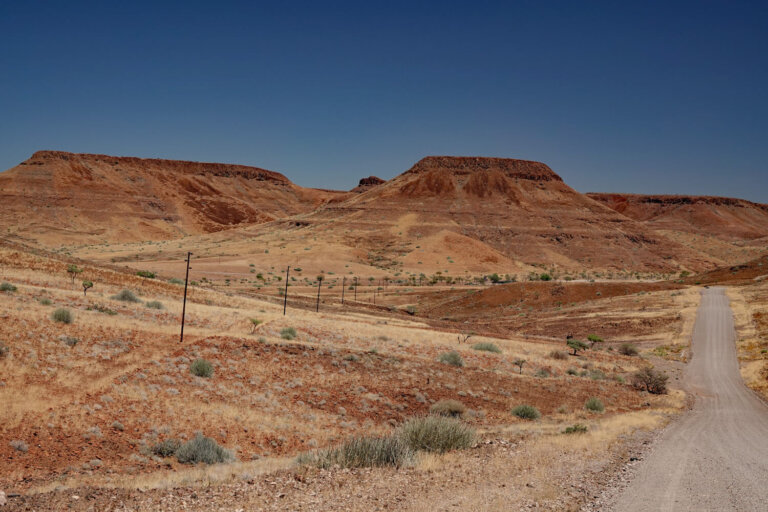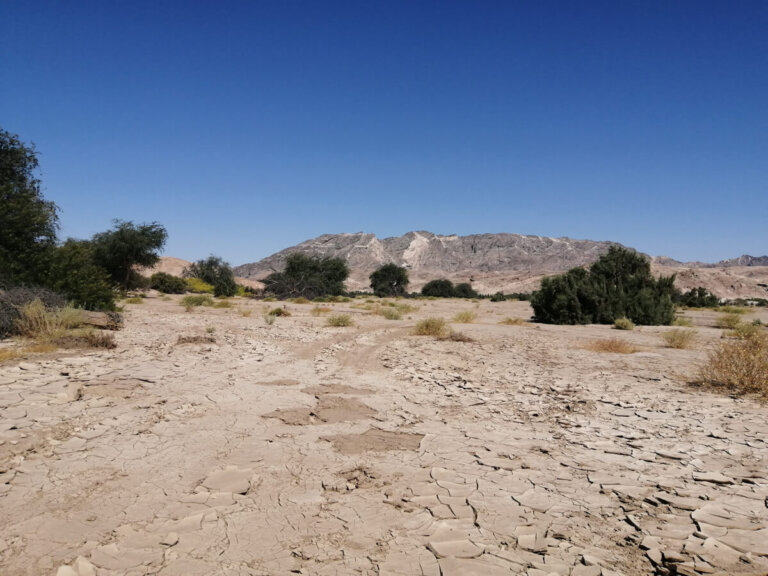Day 2 : Hiking
This first night, a little hard on our 7 cm mattresses, and our enthusiasm to discover the site gets us out of bed very early. The sun rises, illuminating the red sandstone cliffs that surround the valley at the heart of the plateau’s landscape.
.After breakfast and a cup of coffee, we head off to our appointment for a guided walking tour of the reserve, in search of white rhinos.
Advancing through the bush of the Kalahari savannah, our guide, a member of the Herero community, introduces us to different species of trees, medicinal plants, termite mounds, bulbuls and weaver nests.
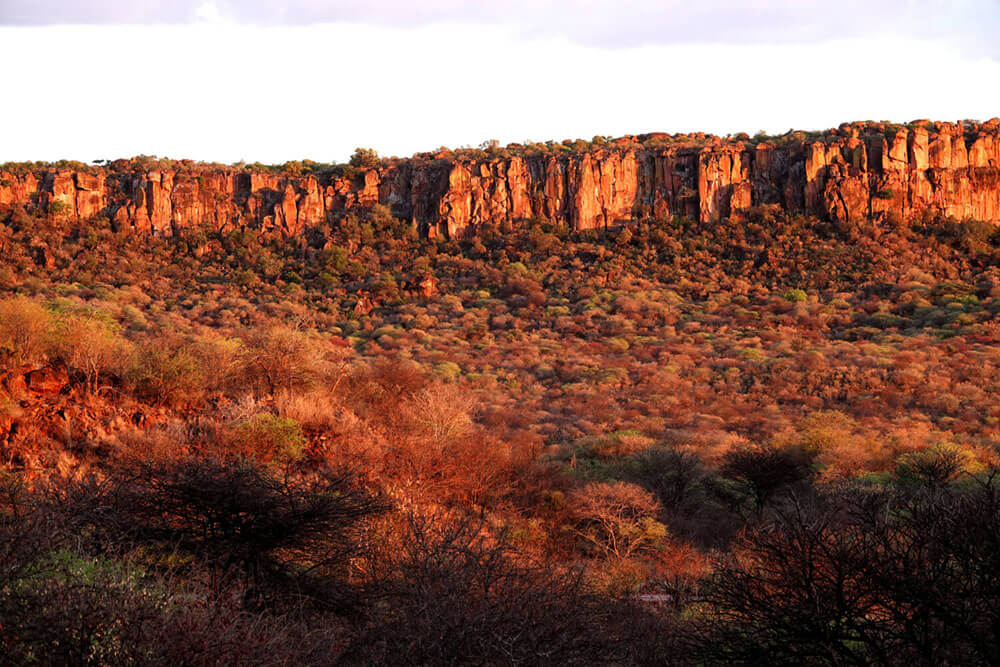

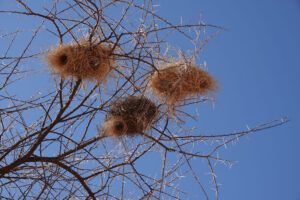
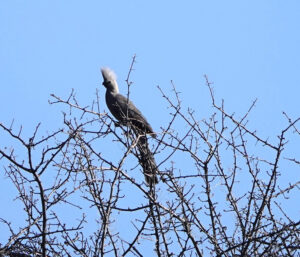
Suddenly, rhinoceros tracks and droppings invaded by huge dung beetles attract our attention. Our little group is a few dozen metres behind us. We catch up when we reach a clearing where three rhinos are grazing peacefully, but the male, disturbed by our presence, starts to huff and puff. The guide explains that, for the safety of us all, it’s essential not to stray far from the group. Indeed, these enormous masses can charge at any moment and are capable of running at speeds of up to 30 km/h. He also tells us that we must speak normally to signal our presence, and back away slowly if the rhinos react. We do so obediently, and the rhino immediately calms down.
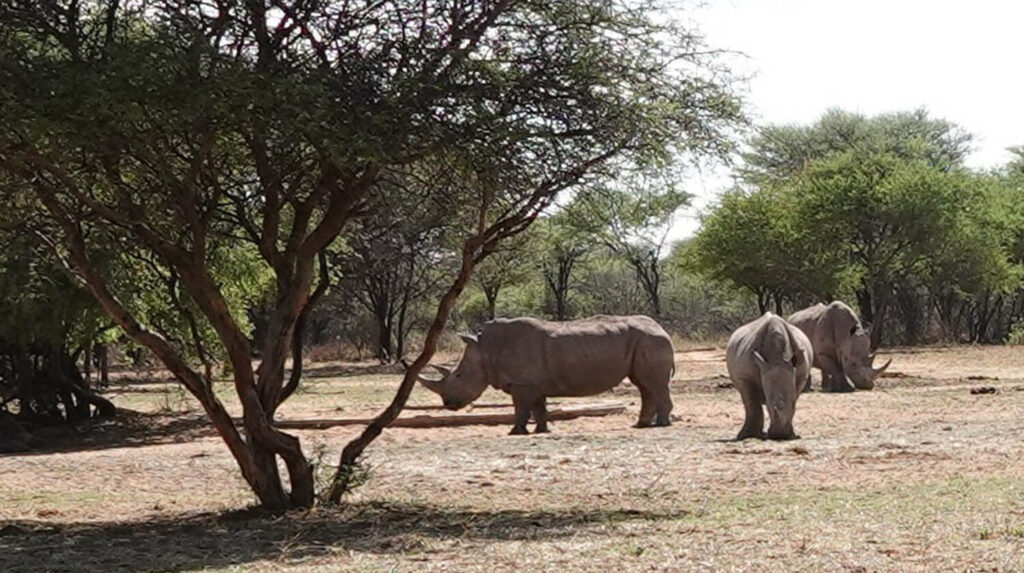
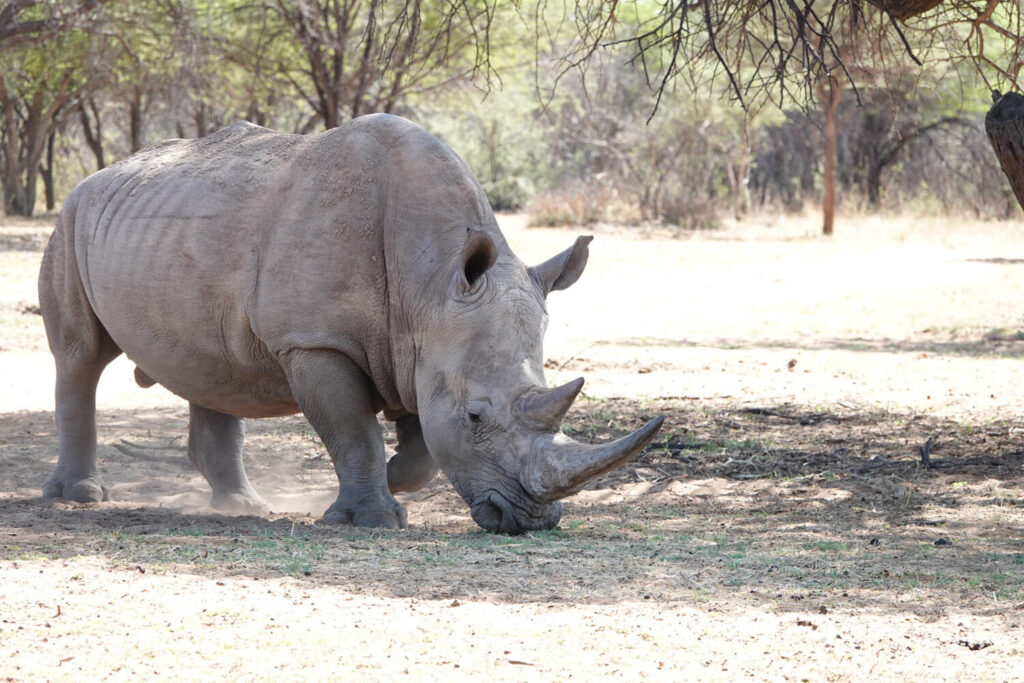
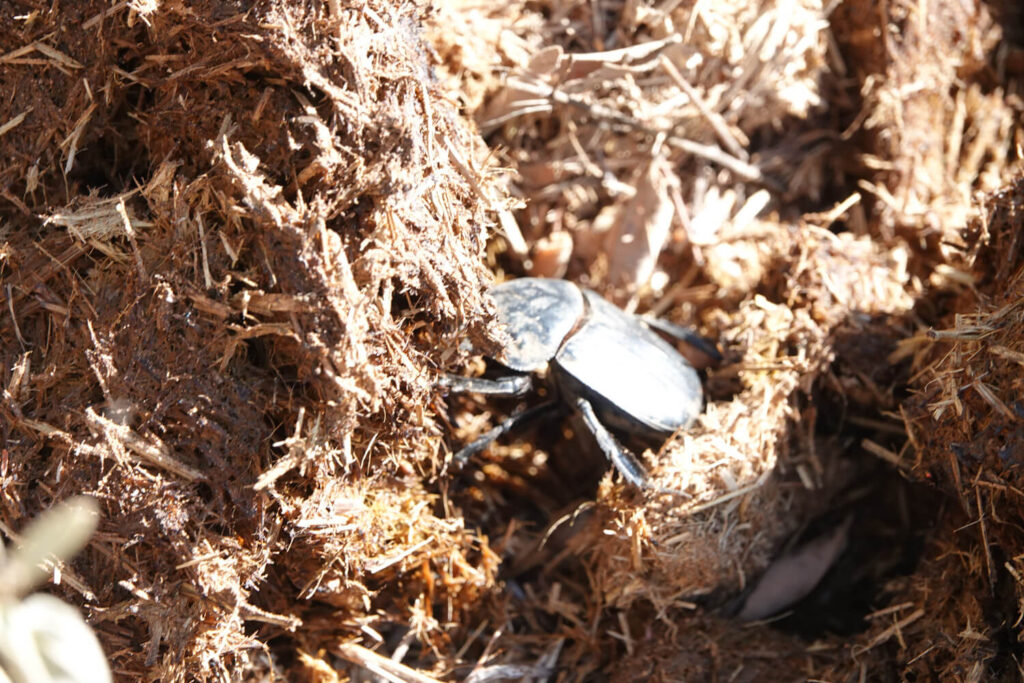
The pair of rhinos are in their twenties, and the youngster is just under three years old. His mother was killed by a snare before giving birth. The baby was rescued and adopted by the couple.
On the way back, we spot the tracks of a black mamba hiding at the foot of a nearby tree. We have to be careful not to get too close, as a bite from this snake would take us away in less than three minutes. Our guide tells us that in his community they use the venom of a specific spider to create an antidote to mamba bites.
A troop of very shy baboons flees at our approach. In the trees, swallow-tailed Bee-eaters, Southern yellow-billed Hornbills and Crowned Lapwings seek shade. The sun is beating down hard on this late morning. We return to our campsite for a short rest before embarking on our afternoon hike along the Daisy Trail.

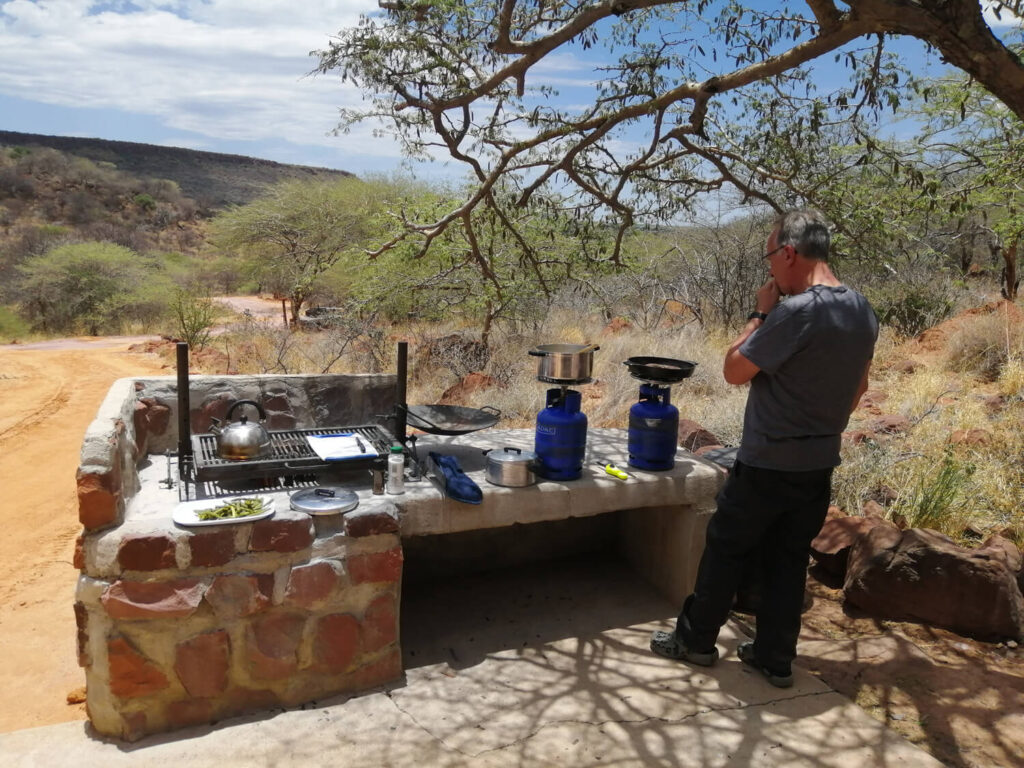
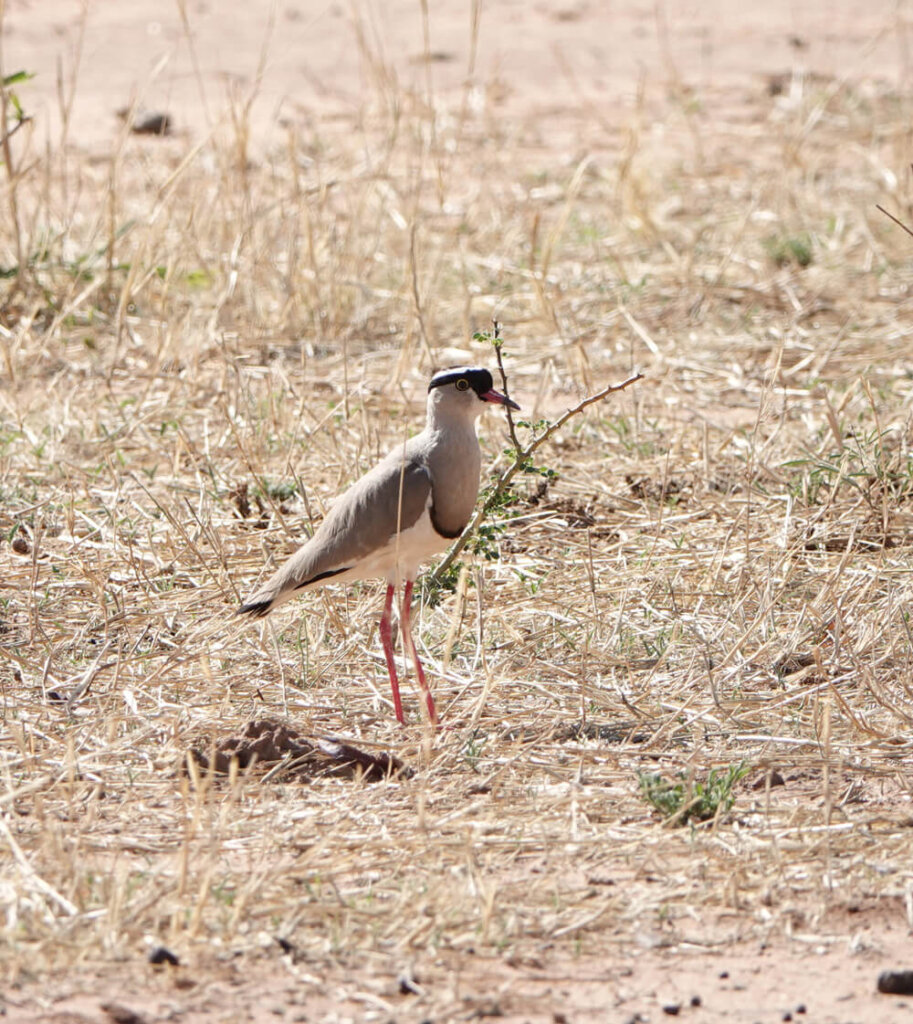
The Daisy Trail climbs the northern slope of the plateau. Between vegetation and scree, windows open onto incredible vistas. Rock Hyrax watch us as we pass, then continue on through the rocks. We rejoin the Ongorowe River, then head up the other slope bordering the southern cliffs. As the day draws to a close, we must press on with our climb. As we reach the summit, we can see the lights of the lodge in the distance. The darkness makes it difficult to make our way through the rocks, but we arrive in time to still recognize the path to our camp.
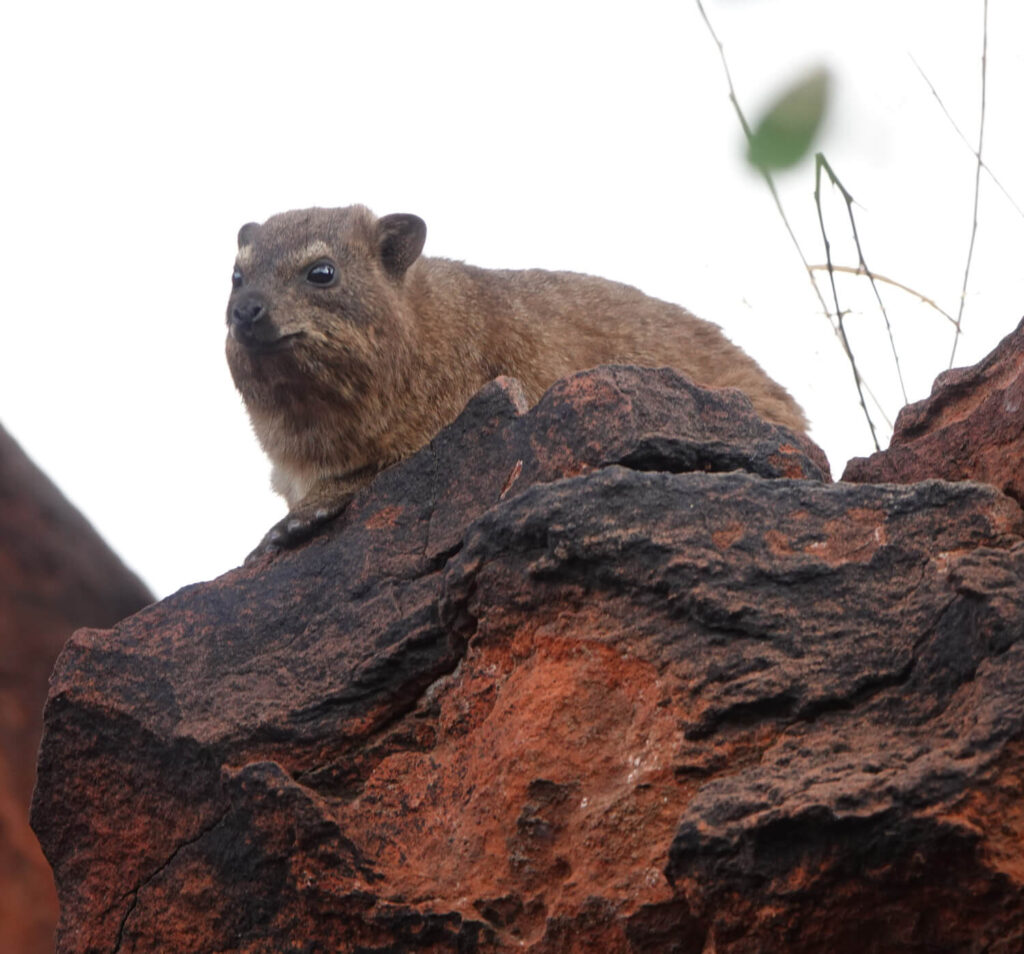
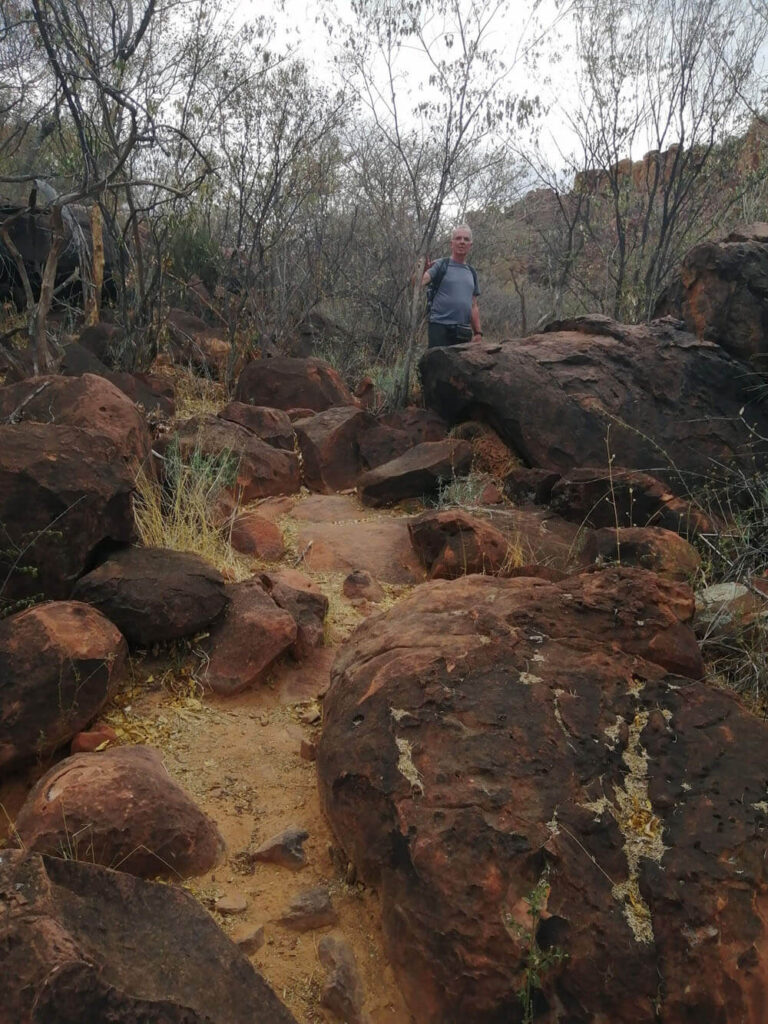
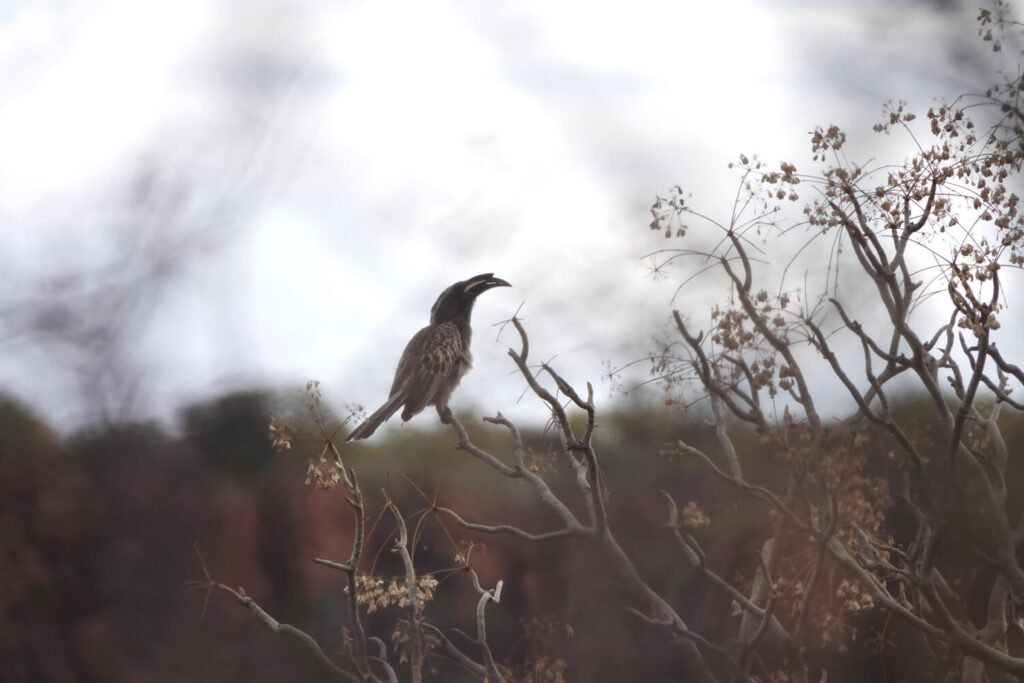
Tomorrow we’ll be leaving the Waterberg without having had time to hike the Giraffe Crossing or the History Path. The History Path tells the story of the bloody Battle of Waterberg (1904). This massacre, perpetrated on the orders of Lieutenant General Lothar Von Throtha, is described as the first genocide of the 20th century. At the end of the war, the surviving Herero were driven into the Kalahari Desert, which, as a German report of the time pointed out, “completed what the German army had begun: the extermination of the Herero nation”.
Lire aussi article : Le génocides des Héréros et des Nama
ROAD TRIP IN NORTH_WEST NAMIBIA
Day 1 : Windhoek – Waterberg Wilderness
Day 2 : Hiking
Day 3 : Ugab Terraces
Day 4 : Ugab River Valley
Day 5 : Damaraland and Skeleton Coast
Day 6 : Cape Cross and the Spitzkoppe
Day 7 : Walvis Bay and Sandwich Harbour
Day 8 : Moon Landscape and Welwitschia Drive
Day 9 : The Kuiseb and Solitaire
Day 10 : Back to Windhoek via the Spreetshoogte Pass
